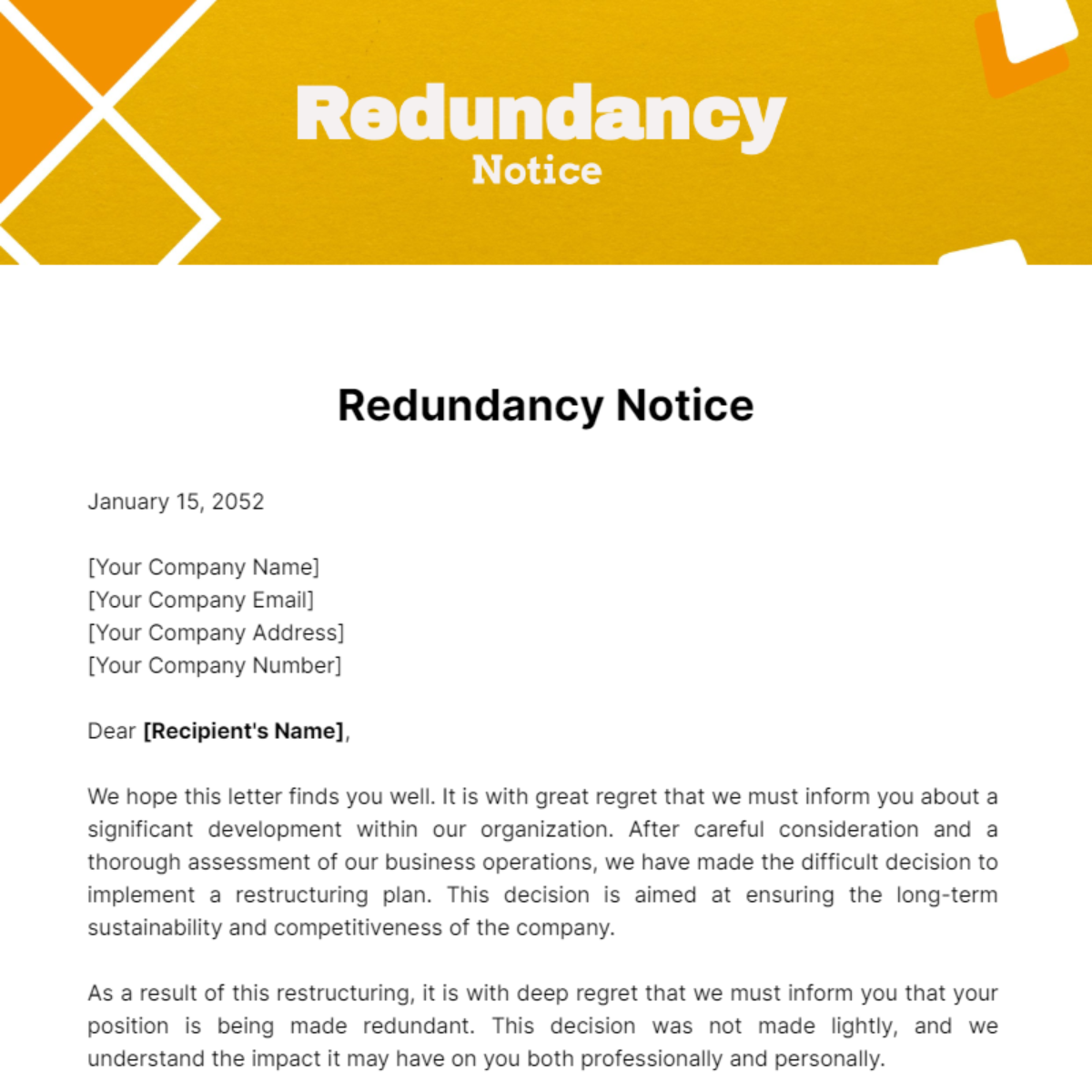How to Manage Redundancy Pay If Company Goes Bust: Key Info for UK Employees
How to Manage Redundancy Pay If Company Goes Bust: Key Info for UK Employees
Blog Article
Checking Out the Interplay In Between Business Redundancy and Organizational Flexibility for Future Growth
In the dynamic landscape of today's service globe, the elaborate connection in between company redundancy and organizational versatility arises as an important factor for sustained growth and success. Firms typically encounter the obstacle of striking a delicate balance between keeping a degree of redundancy to mitigate dangers and cultivating adaptability to respond swiftly to the ever-evolving market demands.
Relevance of Company Redundancy
Company redundancy is an essential aspect that enhances organizational resilience and alleviates operational threats. By incorporating redundancy measures within the organizational framework, firms can better withstand unanticipated disturbances and variations in the service environment. Redundancy works as a tactical barrier, enabling firms to adjust and respond efficiently to unanticipated challenges without compromising vital operations.
One key facet of the significance of firm redundancy is its duty in ensuring continuity during times of dilemma. When confronted with abrupt adjustments or emergency situations, redundant systems, resources, or employees can action in to preserve important functions and prevent prevalent disruptions. This continuity not just safeguards the company's online reputation and consumer depend on but additionally decreases monetary losses and operational downtime.

Strategies for Organizational Adaptability

One more crucial technique is spending in modern technology and framework that can sustain adaptability and scalability. Executing digital tools, automation, and information analytics can simplify procedures, improve efficiency, and offer useful insights for informed decision-making. Furthermore, producing adaptable organizational structures that allow for quick adjustments to market characteristics and client demands is important for staying competitive in a rapidly developing environment. By proactively identifying potential disruptions and opportunities, organizations can proactively adapt and thrive in an ever-changing business landscape.
Harmonizing Redundancy and Adaptability
Accomplishing an unified equilibrium in between functional redundancy and organizational flexibility is critical in browsing the intricacies of a dynamic service environment. Striking the ideal equilibrium between redundancy and versatility is a fragile procedure that calls for a deep understanding of the organization's goals, sector dynamics, and risk resistance.
To attain this balance, companies need to conduct regular evaluations of their procedures to determine locations where redundancy is essential for threat reduction and where flexibility can drive technology and development. Implementing flexible structures, fostering a culture of continuous knowing and enhancement, and urging open interaction throughout all levels of the organization are key strategies to harmonize redundancy and flexibility properly. By straightening these 2 essential elements, firms can place themselves for lasting growth and success in an ever-changing company landscape.
Case Studies on Adjustment Success
In examining circumstances of effective organizational adaptation, it comes to be obvious that the interplay between functional redundancy and versatility is a defining consider forming durable companies. One engaging study is that of Netflix. Initially a DVD rental solution, Netflix demonstrated remarkable flexibility by transitioning into a streaming system when browse around this site digitalization interfered with the industry. By purposefully purchasing innovation and content creation, Netflix not just survived but flourished in a quickly developing market. An additional standout example is Amazon. Beginning as an online book shop, Amazon constantly adjusted its service model, expanding right into diverse fields such as cloud computing and expert system. This adaptability enabled Amazon to remain ahead of rivals and fulfill altering customer demands. Finally, Adobe provides a notable image of successful adaptation. The firm shifted from offering software licenses to a subscription-based design, making certain repeating profits streams and enhanced client involvement. These study highlight the value of operational redundancy combined with business flexibility in fostering long-term growth and competition.
Building Durability for Future Growth
Building durability for future growth requires a tactical alignment of operational processes with market characteristics and emerging trends. Business need to adapt to altering settings by promoting a culture of versatility, development, and constant improvement. Resilience includes not only getting better from my sources setbacks but likewise proactively preparing for future obstacles. One vital element of building resilience is purchasing durable danger management strategies to mitigate possible disruptions. This includes scenario planning, branching out supply chains, and developing contingency strategies for different contingencies (who pays redundancy money).
Moreover, cultivating solid connections with stakeholders, such as customers, workers, suppliers, and the neighborhood, is vital for maintaining and weathering uncertainties depend on and support during stormy times. Efficient interaction and transparency play a crucial duty in building strength, as they help line up expectations and help with partnership in browsing uncertainties.
Moreover, companies need to prioritize discovering and growth initiatives to upskill staff members and outfit them with the necessary tools to adapt to altering conditions. By investing in their workforce, business can boost their flexibility and agility, ultimately enhancing their resilience for lasting future development.
Verdict

In the dynamic landscape of today's organization world, the detailed relationship in between company redundancy and organizational flexibility emerges as a critical variable for continual development and success. Companies commonly deal with the challenge of striking a fragile equilibrium between keeping a degree of redundancy to reduce threats and fostering versatility to respond quickly to the ever-evolving market needs.To accomplish click here to find out more this equilibrium, firms need to carry out routine analyses of their procedures to identify areas where redundancy is essential for risk reduction and where adaptability can drive development and development.In final thought, the interplay in between business redundancy and business versatility is crucial for future growth. Structure resilience via a combination of redundancy and flexibility will make certain that companies are prepared for the challenges of the future.
Report this page